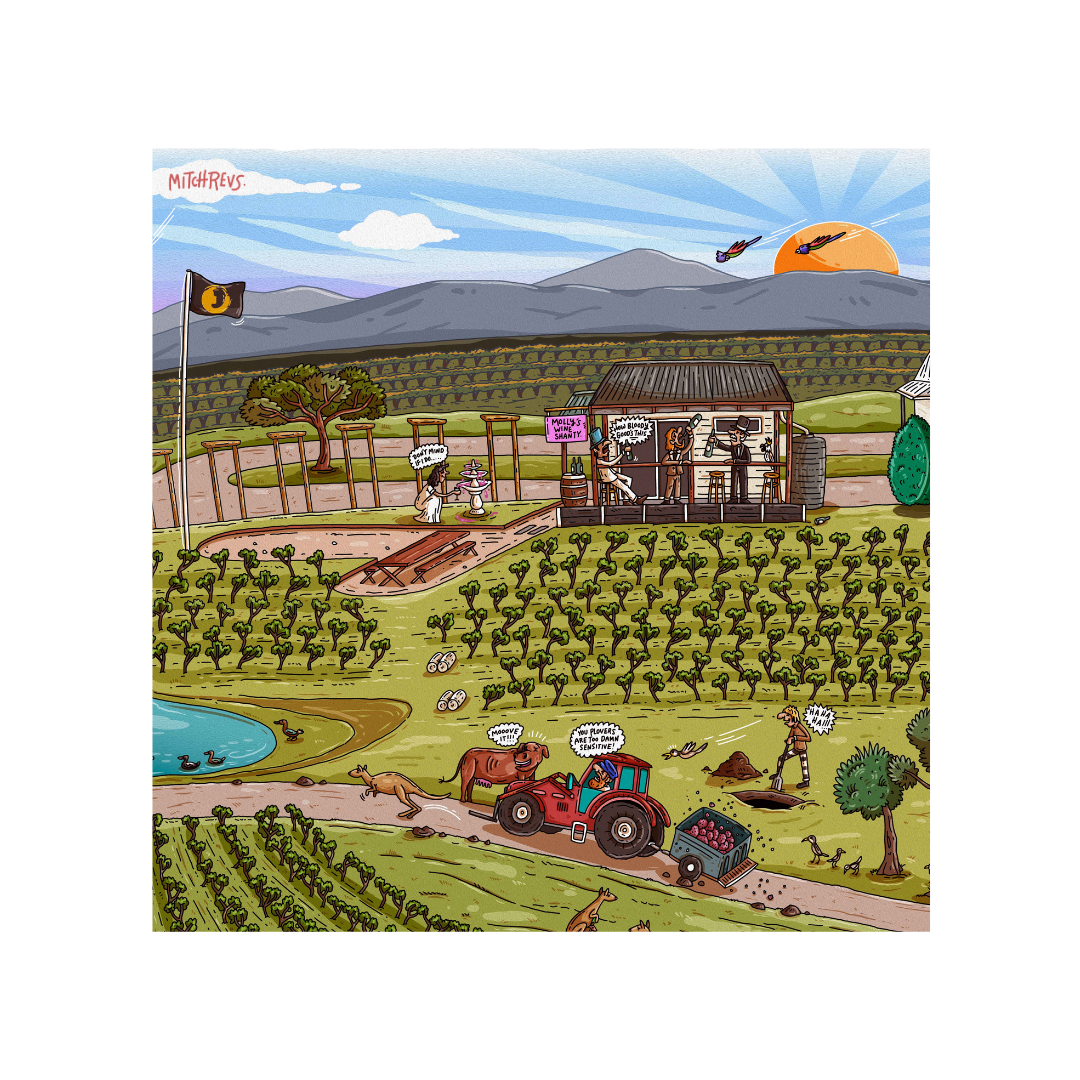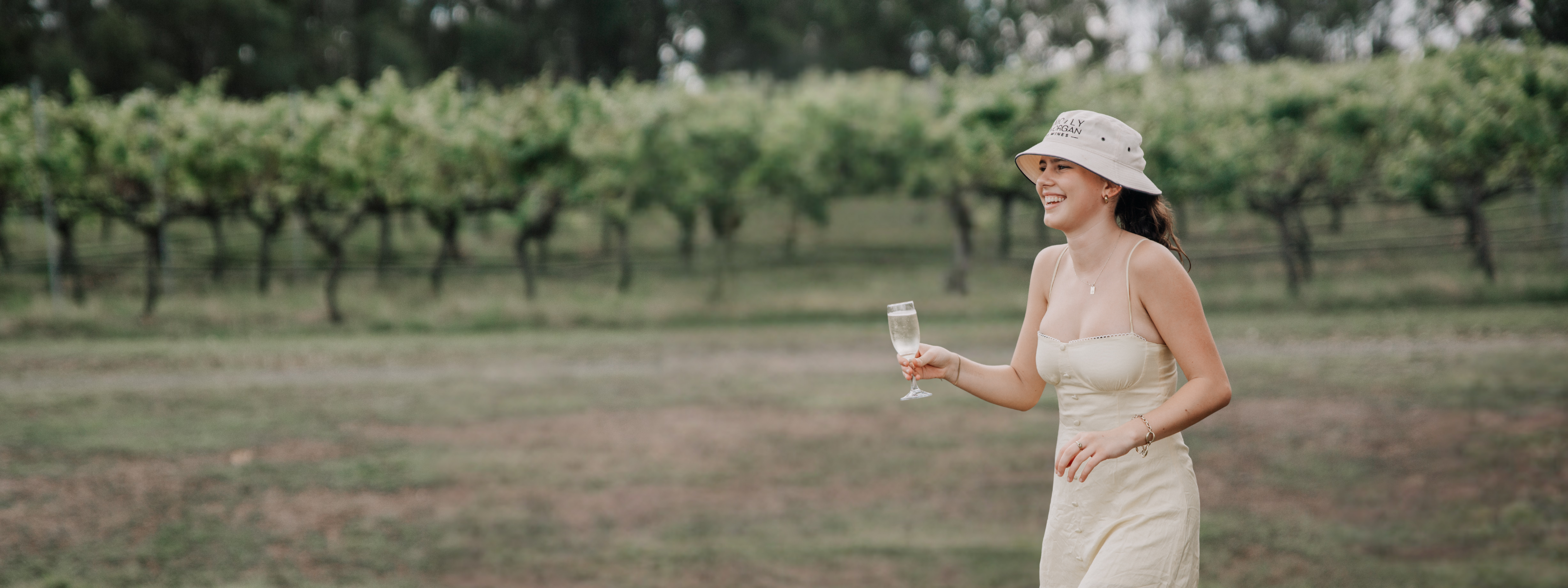Discover the remarkable tale of Molly Morgan
Molly Morgan, a pioneering woman in colonial Australia, is the inspiration behind our Lovedale vineyard in the Hunter Valley. Her story of resilience and courage lives on in the wines we create today.
Molly Morgan’s tale begins in 18th-century England, where she was born as Mary Jones. Her journey unfolded as she navigated the turbulent currents of life, leading her from the shores of England to the vast expanse of Australia’s Hunter Valley. Transported to Australia as a convict for theft, Molly faced the harsh realities of penal servitude and colonial settlement, enduring discrimination, abuse, and exploitation. Undeterred by these adversities, Molly showcased remarkable courage and resilience throughout her life.
Her Legacy in the Hunter Valley
Upon settling in the Hunter Valley, Molly’s unshakeable spirit drove her to become a successful farmer, cultivating the land with innovation and ingenuity. As a landowner, she defied societal expectations of a lower-class citizen and former convict, earning the respect of her peers.
Beyond her achievements in agriculture, Molly’s impact on the community was profound. She became a vital benefactor, offering essential support to settlers, convicts, and the traditional owners of the land.
Despite facing discrimination and adversity, Molly Morgan remained a respected figure in colonial society, celebrated for her resilience, generosity, and unwavering commitment to the welfare of others.
Women in Wine in the Hunter Valley
Our Lovedale vineyard honours Molly Morgan’s legacy and celebrates the spirit of women in wine. We recognise the generations of women who have shaped the Hunter Valley wine region, carrying forward Molly’s pioneering spirit through innovation, care, and a deep connection to the land.
Discover our single vineyard wines in Lovedale, visit our cellar door, or Become a Mate to experience Molly Morgan's legacy firsthand.

1790
First arrival in australia
Molly was tried on 8 August 1789 at the Shrewsbury after being caught stealing hempen yarn from a bleaching factory. She was sentenced to transportation for seven years and arrived at Botany Bay on the Neptune with the Second Fleet on 28 June 1790.
Source: Australian Dictionary of Biography & Hunter Living Histories

1794
An escape back to England
On 9 November 1794, Molly Morgan escaped her sentence in Australia, making her way back to England with 13 other convicts in the store-ship Resolution.
Source: Australian Dictionary of Biography & Hunter Living Histories

1804
Second arrival in Australia
In the following years, Molly Morgan found work as a dressmaker in Plymouth, England, and had married a brassfounder named Thomas Mears.
Sadly, in 1803, their home was burnt down and Molly was accused by her husband of the crime.
She was tried again, this time at the Croydon Sessions on 10 October 1803 and a guilty sentence lead her, once again, to being transported to Australia. Molly arrived in Australia for a second time on 24 June 1804 on the Experiment.
Source: Australian Dictionary of Biography & Hunter Living Histories

1819
The beginning of molly's Hunter Valley legacy
Years later, Molly was given a ticket of leave by the Governor - a reward for being one of a small group of convicts who were well-behaved.
She was instructed to establish a settlement at Wallis Plains (now Maitland) and was given a few acres of land.
Molly became a successful farmer, maintaining the land herself and eventually opened a wine shanty near the river. As the river navigation extended and settlement grew, her wine shanty became profitable and increasingly popular with the locals.
Source: Australian Dictionary of Biography & Hunter Living Histories

1823
Settling in
Molly Morgan was granted the lease of 159 acres and the help of convict clearing in November of 1823, by Governor Sir Thomas Brisbane who was impressed by her resourcefulness and efforts at farming her land.
At Anvil Creek (now Greta), Molly purchased 203 acres where she built the 'Angel Inn'.
Source: Australian Dictionary of Biography & Hunter Living Histories

1825
From 'wallis plains' to 'molly morgan's'
By the mid 1820’s, Molly had become a pinnacle in the community, with the track from the Wallis Plains settlement to Singleton known as “Molly Morgan's line of road” and Wallis Plains itself soon became known as “Molly Morgan's”.
Source: Australian Dictionary of Biography & Hunter Living Histories

1835
Last years and a lasting legacy
Throughout her time in Australia, Molly worked hard and became one of the largest landholders on the Hunter River. She was a wealthy woman, known for her generosity towards those who were less-fortunate, building a hospital, donating money and even rode to Sydney multiple times to advocate on behalf of convicts that were sentenced to death.
As the settlement grew, she sold off small blocks to make money, and through legal difficulties, Molly’s wealth began to decrease.
Molly spent her last years in retirement at Anvil Creek, and died on 27 June 1835.
Source: Australian Dictionary of Biography & Hunter Living Histories

Molly Morgan's Legacy
Today, the Molly Morgan Wines vineyard stands atop the majestic Molly Morgan Ridge, paying homage to this remarkable woman. The vineyard not only echoes Molly’s innovative spirit in winemaking and hospitality but also embodies her legacy of giving back to the community.
As you raise a glass to the pioneer women of the Hunter, you become part of an extraordinary journey inspired by Molly Morgan’s indomitable spirit and the exceptional wines that bear her name.

Bringing Molly's Story to life
Mitch Revs X Molly Morgan Wines collaboration
We’re excited to share a special collaboration with Newcastle artist Mitch Revs. Known for creating scenes that invite you to look closer and discover new details each time, Mitch has produced a one-of-a-kind artwork that celebrates both Molly Morgan Wines and the remarkable history of our namesake, Molly Morgan.



